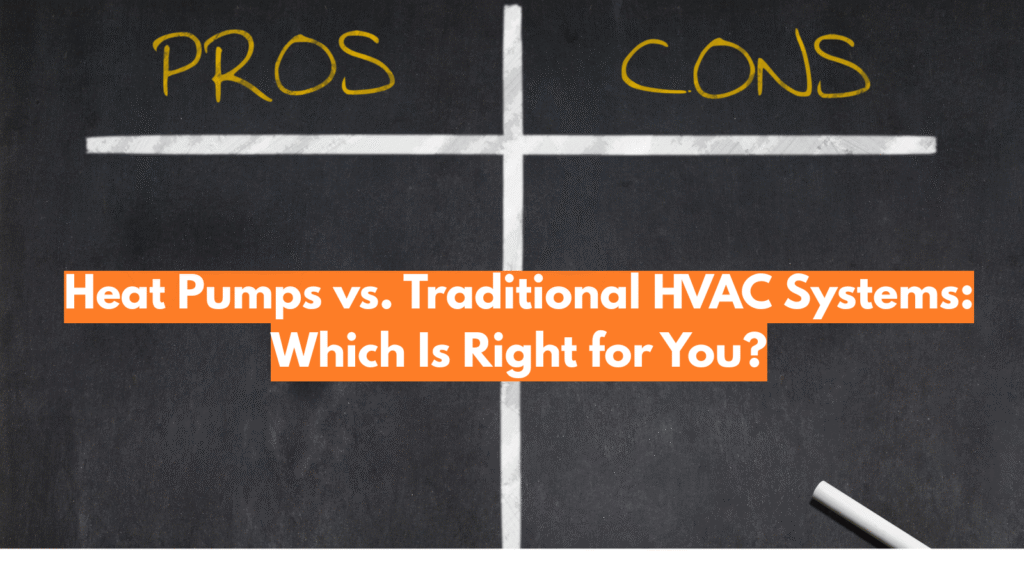When it comes to heating and cooling your home, choosing the right system can have a big impact on your comfort, energy efficiency, and utility costs. Heat pumps and traditional HVAC systems each have their own advantages, and the best choice depends on your climate, budget, and specific needs. Since Minnesota experiences bitterly cold winters, selecting the most effective heating system is crucial. Here’s a comparison to help you decide which system is right for you.
How They Work
- Heat Pumps: Transfer heat rather than generating it. They extract heat from the air or ground and move it inside during the winter and outside during the summer.
- Traditional HVAC Systems: Typically consist of a furnace for heating and an air conditioner for cooling. Furnaces generate heat by burning fuel, while AC units remove heat from indoor air.
Energy Efficiency
- Heat Pumps: More energy-efficient in moderate climates, but in extreme cold temperatures, their efficiency drops, requiring supplemental heating.
- Traditional HVAC Systems: Furnaces, especially high-efficiency gas models, provide consistent and reliable heat even during Minnesota’s harsh winters.
Climate Considerations
- Heat Pumps: Best suited for milder climates, though cold-climate models have improved, they may still struggle in subzero temperatures without backup heating.
- Traditional HVAC Systems: The best option for extreme cold climates like Minnesota, where a powerful furnace ensures dependable heat throughout winter.
Installation and Upfront Costs
- Heat Pumps: Generally have a higher initial cost but offer lower operating expenses over time in moderate climates. However, in extremely cold regions, supplemental heating costs may negate those savings.
- Traditional HVAC Systems: Furnaces and air conditioners have a lower upfront cost and are the more practical choice for Minnesota’s long, frigid winters.
Lifespan and Maintenance
- Heat Pumps: Typically last around 15 years with proper maintenance. Since they run year-round for both heating and cooling, they may require more frequent servicing.
- Traditional HVAC Systems: Furnaces can last 20 years or more, while air conditioners usually last around 15 years. Given the extreme winters in Minnesota, a reliable furnace is a long-term investment.
Environmental Impact
- Heat Pumps: More eco-friendly as they don’t rely on burning fossil fuels and can be powered by renewable energy sources, but in extremely cold weather, they may need supplemental electric or gas heating.
- Traditional HVAC Systems: Gas furnaces produce emissions but are a necessity in extremely cold regions where heat pumps may not perform efficiently.
Comfort and Performance
- Heat Pumps: Provide even and consistent heating in moderate temperatures, but may struggle in extreme cold.
- Traditional HVAC Systems: Furnaces generate powerful, high-temperature heat, which is essential for Minnesota’s freezing winters.
Financial Incentives
- Heat Pumps: Qualify for various rebates and tax incentives due to their energy efficiency, though their savings in extremely cold climates may be limited.
- Traditional HVAC Systems: May qualify for some rebates, and the cost savings of a furnace in extreme winters often outweigh the benefits of a heat pump.
Which System Is Right for You?
For Minnesota homeowners, a traditional furnace and air conditioner system is generally the best choice due to the state’s harsh winter conditions. While heat pumps can be efficient in milder climates, they may struggle to provide sufficient warmth when temperatures drop well below freezing. If energy efficiency is a priority, hybrid systems that combine a heat pump with a furnace can offer a good balance.
Consult the Experts Still unsure which HVAC system is right for your home? Contact Marsh Heating & Air Conditioning today! With over 50 years of experience serving Minnesota homeowners, we can help you choose the best solution for your comfort and efficiency needs.

